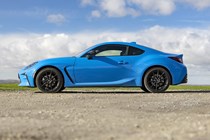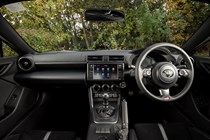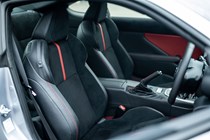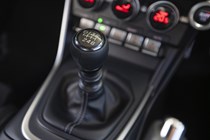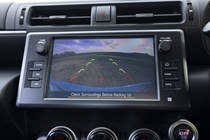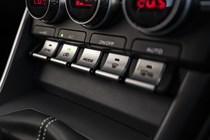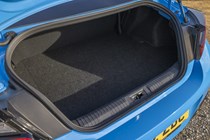
Toyota GR86 engines, drive and performance
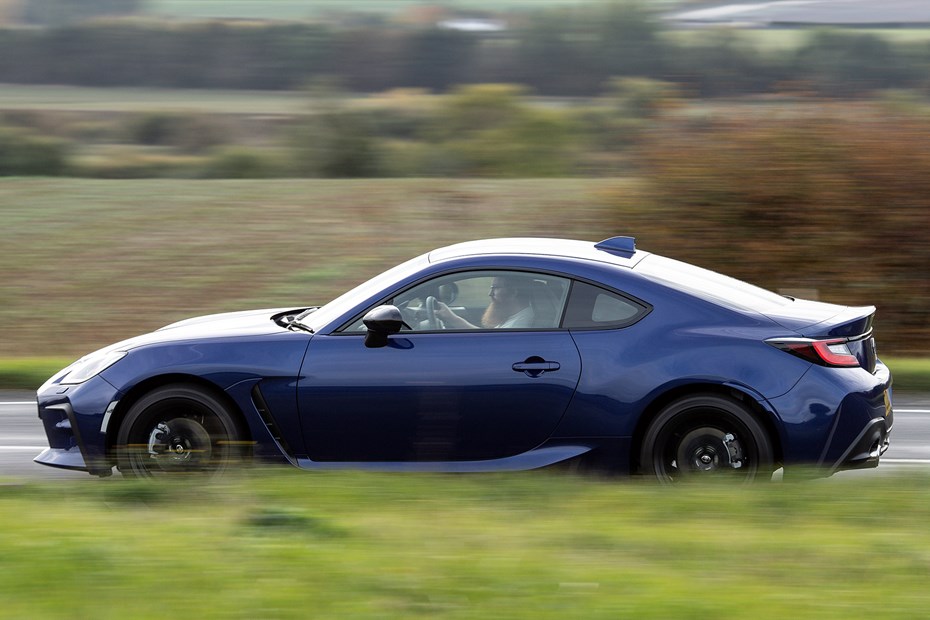
- Powered by a big, revvy four-cylinder engine
- Loads of mid-range grunt for safe overtaking
- Doesn’t like being driven slowly
Petrol engine
Toyota has kept the GR86’s engine range delightfully simple. Like the old GT86, there’s just one four-cylinder unit available – but the latest car’s displacement has been increased from 2.0 litres to 2.4 litres. The extra capacity means the GR86 has more poke in the mid-range. Plus, the new engine is no heavier than the old one because Toyota has made it from lightweight materials. That means it retains the old car’s handling balance, but it accelerates with greater ferocity.
Power and torque swells from 200hp and 205Nm to 235hp and 250Nm, which is more than enough to make the GR86 feel sprightly. What’s particularly important, though, is the way the engine delivers its performance. Peak torque (pulling power) is now served at 3,700rpm, rather than the GT86’s screaming 6,700rpm. That means it’s a little less frenetic to drive.
It doesn’t have anywhere near as much grunt as a comparably sized turbocharged engine, but there’s something quite intoxicating about wringing the engine for all it’s worth to get the best performance. Happily, it’s an engine that wants to be driven hard. It protests when you potter it around town cold. It takes a good eight miles to warm the engine through and it only really wakes up once you get it into the upper half of the rev counter.

Plus, because it’s a four-cylinder boxer unit (which means there are two banks of two pistons moving horizontally rather than one bank of four moving vertically), it’s a very smooth engine. The equal and opposing forces of the pistons working against each other cancels out the harsh vibrations you get in a highly strung four-cylinder car such as the Hyundai i30 N. That means you have all the more reason to hammer it. Especially because it makes a fantastic racket when you do.
The GR86 comes with the same six-speed manual gearbox you got in the GT86, albeit with a slightly sharper shift mechanism. It’s a very satisfying transmission to use, with a pleasingly mechanical feel – and that means you’ll relish the opportunity to downshift for a corner or an overtake. An automatic is available as an option, but we suggest you avoid it if you can. This is a car designed to engage the driver. A manual better suits its character.
What’s it like to drive?
- Fabulously tactile driving experience
- Quick steering and powerful brakes
- Superb handling and composed ride
It only takes a few miles to realise that the GR86 is a very talented sports car indeed. Its entire raison d’être is to make you choose the long way home on your drive back from the office. It’s fizzing with character and serves as a reminder of what made us enjoy driving in the first place.
A big part of why the GR86 is so good is because Toyota absolutely nailed its controls. The pedals are all perfectly weighted and the power steering system has just enough heft to feel engaging, but not so much that you tire yourself out on a complicated fell road. It’s an incredibly manageable car that encourages you to take advantage of all it has to give.
The six-speed manual gearbox is a joy to use – and in an age where most performance cars are fitted with automatic transmissions, the DIY GR86 feels like good retro fun. The new 2.4-litre engine also provides significantly more punch than before, which means it charges through gears more quickly.
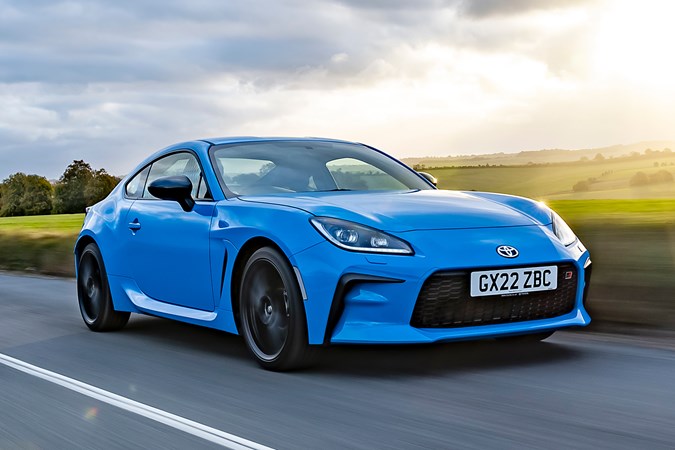
Despite being smooth and flexible at low speeds, the engine’s peak power is developed right at the top its vocal range, at 7,000rpm. That means there’s still a reward to extending the GR86 in every gear. It sounds better than before, too, although the engine noise is enhanced by a speaker in the cabin which may annoy the purists.
As you’d expect, the GR86 handles beautifully. Its low-slung flat-four engine gives it an unusually low centre of gravity, which means you can get lots of front end grip. If you push it especially hard and give it a boot full of throttle halfway round the corner, you can unstick the rear end. However, it’s less willing to oversteer than the old car.
Toyota fitted the GT86 with skinny tyres lifted from its eco-minded range of cars, but the GR86 has a proper set of performance tyres. That’s good if you’re trying to go fast, but less exciting if you want to go sideways – and we kind of miss the way the GT86 would smear itself across a hairpin.
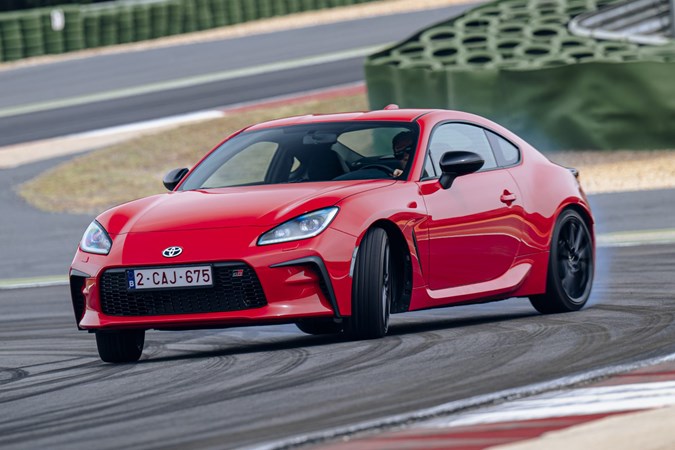
We can’t criticise the car’s suspension, though. The tuning is very clever, managing to absorb the worst bumps while keeping the body flat. That means you don’t emerge from your favourite country lane feeling like you’ve just fought 10 rounds with Tyson.
Beware if you take the GR86 on a long drive, though. Toyota says you can drive it over long distances – and you can. You just need to recalibrate your understanding of what comfortable is. The GR86 doesn’t waft down the road like an expensive sports cars such as Aston Martins or a Bentleys. Its ride has a much firmer edge, which means you take more of a pummelling at motorway speeds. You get used to it after the first 100 miles, though.



